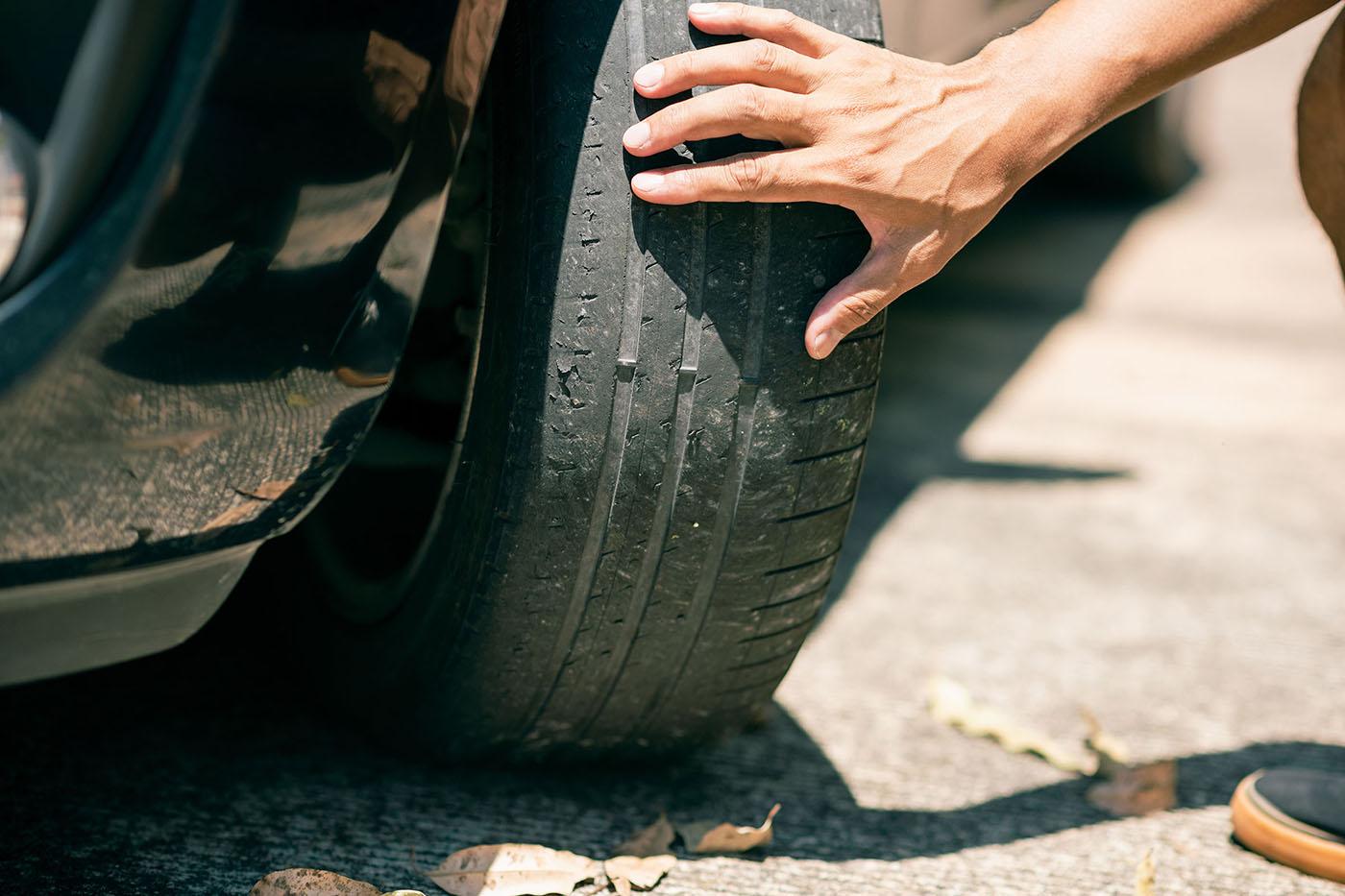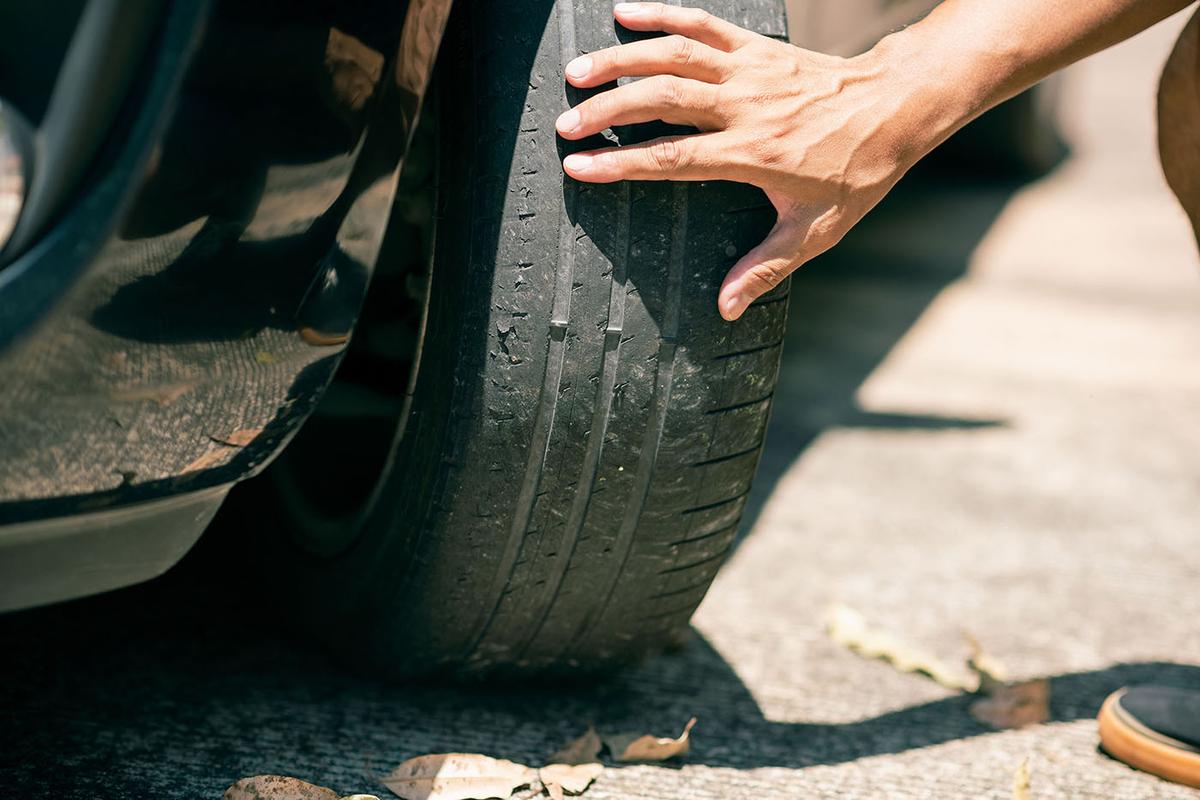

Putting off new tires might seem like a way to save money, but worn-out tread can end up costing more in the long run. From safety risks to expensive car repairs, here’s what you need to know and how Snap Finance can help you get the tires you need now.
Key takeaways
Worn tires are a serious safety risk. Low tread increases your chances of blowouts, poor braking, and aquaplaning – especially in wet weather.
Driving on bald tires can damage your car. Without proper tread, your tires can’t absorb shocks, leading to expensive suspension repairs.
Waiting to replace tires can cost more overall. The upfront cost of new tires is often less than the long-term hit to your wallet—and your safety.
Snap Finance helps you pay over time. With lease-to-own financing, you can get new tires today and pay later.
Trying to get every last mile out of your tires can feel like a smart way to save money. We’ve all been there, looking at our tires and thinking, "They can go a little longer." But driving on worn-out tires often costs you more in the long run. These hidden costs show up in repair bills, fuel expenses, and, most importantly, in risks to your safety.
Your tires are the only part of your car that touches the road. They are critical for safe braking, steering, and handling. When the tread wears down, you lose the grip you need to control your vehicle, especially in bad weather.
What are the costs of putting off new tires? Let’s look at the serious safety risks, the potential for expensive vehicle damage, and the extra money you'll spend on gas. We will also explore how you can get new tires, even if your budget is tight.
Risks of blowouts, poor braking, and aquaplaning
The most immediate and dangerous costs of worn tires are related to your safety on the road. When your tire tread is low, your car's performance is seriously compromised.
First, let's talk about blowouts. Worn tires are much more likely to fail suddenly. As tread depth decreases, the tire structure weakens and is more vulnerable to punctures from road debris like nails or potholes. A blowout at high speed can cause you to lose control of your vehicle, leading to a severe accident. The cost of a tow truck, emergency repairs, and potential medical bills far exceeds the price of a new set of tires.
Next is poor braking performance. Your tire's tread is designed with deep grooves to grip the pavement. As these grooves wear away, your stopping distance increases significantly. In an emergency, those extra few feet can be the difference between a close call and a serious collision. On dry roads, studies show that a car with bald tires can take nearly twice as long to stop as one with new tires. On wet roads, the difference is even more dramatic.
Aquaplaning, also known as hydroplaning, happens when a layer of water builds up between your tires and the road surface, causing you to lose all traction and control. It feels like you're skidding on ice. New tires have deep channels that funnel water away, keeping the rubber in contact with the road. Worn tires can't clear water effectively. Even a small amount of rain can become a major hazard, putting you, your passengers, and other drivers at risk.
Long-term damage to vehicle suspension
Your tires do more than just roll. They are a key part of your vehicle's suspension system, which is designed to absorb bumps and keep your ride smooth. Healthy tires with proper air pressure act as the first line of defense against rough road surfaces.
When your tires are worn, they lose their ability to absorb these impacts. More of the shock and vibration from potholes, bumps, and uneven pavement is transferred directly to your car's suspension and steering components. This includes your shocks, struts, ball joints, and tie rod ends.
Over time, this constant jarring and vibration will wear out these expensive parts prematurely. You might start to notice your car feels bouncier, handles poorly, or makes clunking noises when you go over bumps. These are all signs of suspension damage.
Replacing suspension components can be a very expensive job, often costing hundreds or even thousands of dollars. By trying to save a few hundred dollars on tires, you could be setting yourself up for a much larger repair bill down the road. Maintaining good tires protects your entire vehicle and helps you avoid these costly and unexpected repairs.
Fuel economy losses with bad tires
Another hidden cost of driving on old tires is the money you waste at the gas pump. While it might seem small on a day-to-day basis, it adds up significantly over time. Your tires play an important role in your vehicle's fuel efficiency through something called "rolling resistance."
Rolling resistance is the energy your vehicle needs to send to the tires to maintain movement at a consistent speed over surfaces. In simple terms, it's the effort required to keep your tires rolling. Different factors affect rolling resistance, including tire pressure, tread design, and the rubber compounds used in the tire.
As tires wear out, their rolling resistance can change. While bald tires might technically have lower rolling resistance on a perfectly smooth, dry surface, real-world driving is different. Worn tires are often improperly inflated because they may have slow leaks or are not checked as often. Underinflated tires have a much higher rolling resistance because they flex more, forcing your engine to work harder to move the car forward.
When your engine works harder, it burns more fuel. According to the U.S. Department of Energy, you can improve your gas mileage by up to 3% just by keeping your tires inflated to the proper pressure. A couple of years in saved gas mileage could have gone a long way toward paying for a new set of tires.
How to finance new tires and avoid risk
Reading about all these risks and costs can be stressful, especially when you're worried about how to pay for new tires. The good news is that you have options, even if you don’t have hundreds of dollars to spend at once or if your credit score is a concern. Many tire shops and service centers offer access to financing to make this essential purchase more manageable.
If you don’t have perfect credit, lease-to-own financing may help you get the tires you need now. Snap Finance is a leading provider of lease‑to‑own financing.
Here’s how it works.
Apply in minutes: Apply online, in a partner store, or through a QR code or text‑to‑apply flow, in minutes. Get a decision in seconds, and there’s no impact to your FICO® score to apply.¹
Know your approval amount: If approved, you’ll receive an approval amount up to $5,000 in lease-to-own financing to use at participating tire retailers.2
Shop at a Snap Partner: Pick the tires that fit your vehicle and goals, then check out with Snap. Snap purchases the merchandise from the retailer, and you lease it from Snap. You use the tires while making payments under your lease agreement. Find a Snap Partner now.
Pay over time: Payments are set to align with your paydays for the maximum term of the agreement. You can use the Maximum‑Term Plan (lowest ongoing payments) or choose an early ownership option to reduce overall lease costs.3
Obtain ownership: When you complete the terms of your lease, the lease ends and the tires are yours.
Find local tire dealers that offer access to Snap Finance lease-to-own financing
Ready to shop? It’s easy to find a tire dealer near you or online that offers Snap’s lease‑to‑own financing. Use the Snap Finance Store Locator to search by your ZIP code to see nearby local partners that carry tires and wheels.
Replace worn tires sooner than later
Investing in new tires is one of the smartest decisions you can make for your car and your peace of mind. You'll enjoy better handling, shorter stopping distances, and a safer ride for you and your family. Plus, you’ll protect your vehicle from unnecessary wear and tear and save money on gas.
With Snap Finance lease-to-own financing, there’s no need to wait. Replace your tires now and pay later.
Interested in learning more? Check out these resources from Snap Finance:
Lease-to-own 101: How Snap Finance works from application to ownership
Get ready for inclement weather: Why winter tires are important for care safety
The advertised service is a lease‑to‑own agreement provided by Snap RTO LLC. Lease‑to‑own financing is not available to residents of Minnesota, New Jersey, and Wisconsin.
1 Not all applicants are approved. While no credit history is required, Snap obtains information from consumer reporting agencies in connection with applications, and your score with those agencies may be affected.
2 Approval amounts vary from $300 to $5,000, subject to underwriting, and apply only to the cash price of leased items.
3 The default payment plan is the Maximum-Term Plan, which includes 12- to 18-month renewable terms and is your highest cost option. To exercise an early ownership option, including any early buyout promotions, you must make all regular payments on time and ensure the required amount is paid within the applicable timeframe through the customer portal or by contacting Customer Care at 1-877-557-3769. Early buyout promotions may include a cost of lease above the merchandise price. For details and limitations, including relating to applicable early ownership options, refer to your lease agreement.